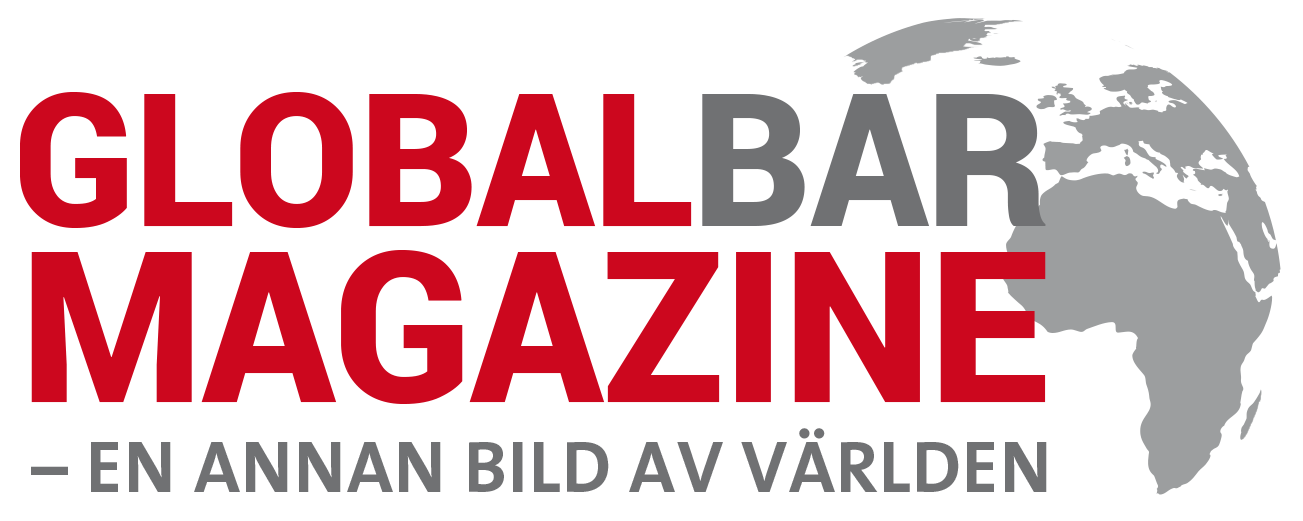ESSAY. Africa does not lack talent. What is lacking are more platforms to showcase these skills. The creative sector has the potential to bring in billions of dollars, but investors are hesitant. Now, African countries need to create the infrastructure required for creatives that would assure proper remuneration for artists. The creatives themselves must also take action, writes Teshome Wondimu and Lucy Ilado from Selam.
August 2022 month marks our 25th anniversary of Selam, and we are proud to have maintained an incredible momentum, vibrancy, and scope of our projects from 1997 to the foreseeable. Selam was first founded to draw attention to the different cultures that the diaspora populations in Sweden represented, particularly those from Africa, Latin America, and the Caribbean.
Soon after, we established a strong network on the continent and realized that our expertise and networks in Sweden were desperately needed to support the growth of the Creative and Cultural Industries (CCIs) on the continent. As a result, we joined other stakeholders in lobbying Swedish decision-makers and government agencies like Sida, to support various projects on the continent. Our efforts eventually paid off, and through the Swedish government’s Development Policy and Strategy for Africa, we commenced with research and studies in East Africa in the year 2000 to better understand how the complete cultural ecosystem operated in order to provide relevant support.
“Majority of African countries do not have the regulations and infrastructure required to provide a favorable operating environment for creatives and investors ”
Over two decades later, the journey has been an exciting and challenging one; characterized by hard work, growth, and a clear vision to be among the leading culture organizations working for the growth of the culture ecosystem in Africa. We have managed to do this through various development and cultural aid projects, which were implemented with the collaboration of our partner organizations, governments, and its agencies across the continent.
Selam’s work has been molded throughout the years by five pillars: Institutional Building, Culture to Promote Peace and Reconciliation, Job Creation, Tech and Digitalization, Democracy, Human Rights & Freedom of Speech. We are also guided by regional frameworks by the African Union, with the most recent being the revised African Union Plan of Action on Cultural and Creative Industries in Africa, which defines priorities and paths for the development of Africa’s CCIs. We are lobbying for its implementation because the industry strategies and recommendations that have been provided are sufficient to springboard, transform and commercialize the culture and creative sectors.
The African Union Commission’s Division of Culture has done an outstanding job of harmonizing and coordinating activities and policies across the continent in order to create more structure and opportunities for harnessing culture for integration and African rebirth. However, this agency requires assistance from cultural organizations and civil society in following through on the different commitments made by heads of Member States to ensure country-level progress. We also urge the international community to provide extra resources to the AU’s cultural division in order to aid efforts toward the implementation of various programs, such as research, that would enhance the sector’s growth on the continent.
The reality is that the majority of African countries do not have the regulations and infrastructure required to provide a favorable operating environment for creatives. For the few countries that have adequate laws and regulations in place, implementation is lacking, particularly among the various government agencies.
We and other organizations have been involved in lobbying efforts for the right policies and laws that would assure proper infrastructure and remuneration for artists. Still, there is still much work to be done, and we now understand that lobbying cannot be done solely by professionals and organizations in the culture sector; creatives too must take action through their associations and unions. On this front, we are now doing a needs assessment for active artist unions in eight African countries, with the ultimate goal of equipping the leadership to participate actively in industry-related advocacy. The rationale for this is that when governments develop rules and regulations to support and foster creative processes, the artistic community should be included. Therefore, we believe that projects and platforms that promote lobbying and advocacy actions involving African governments, creatives, civil society, and the commercial sector in the design and implementation of creative policies and legislation are needed. Our most recent regional project, the Pan African Network for Artistic Freedom (PANAF) supported by the Swedish Arts Council, which seeks to create a network of creatives and empower them with capacity to advocate for their rights, is one of those platforms that we hope will be useful in advocating for industry needs beyond freedom of expression.
The challenges of financing and investment remain
We also continue to lobby through dialogue for investment and financing opportunities for the creative sector by the private sector and governments. Along with the democratic benefits of investing in culture, the economic case for increased public spending on the growth of the culture and creative sectors is crucial. According to UNESCO, the African cultural products industry employs half a million people and generates $4.2 billion in income. Because the formal creative sector has historically struggled to obtain financing, much of this is currently done in the informal economy. Banks and investors frequently shy away owing to a lack of funds that inventors can offer as collateral and other associated costs.
“Many potential investors are hesitant to participate in Africa’s ever-growing creative business due to the plethora of regulations and laws that are constricting the growth of creative businesses.”
From experience, many potential investors are hesitant to participate in Africa’s ever-growing creative business due to the plethora of regulations and laws that are constricting the growth of creative businesses. The creative sector has the potential to bring in billions of dollars, but many investors are hesitant; they feel that neither the public nor the private sectors have any policies for the industry and do not consider it to be a major priority. A large number of investors contribute to product advertising and marketing. Potential investors are also seeking for trade volumes to provide security and assurance for their investment. On the other hand, governments must address ”more immediate” issues including poverty, natural and man-made disasters, education and health care, and the construction of physical infrastructure. Recent discussions, for example, in Nigeria and South Africa, have demonstrated that the creative industry may have a big impact on the national economy and job creation for the youth.
To encourage investors to fund this industry, greater awareness must be directed in this direction. Other sectors, such as infrastructure, mining, and fintech, consistently outperform in terms of investment. While these businesses are vital in their own right and should receive a considerable portion of the financing, the funding discrepancy between these industries and the creative sector should not be as large as it is presently, especially given the creative industry’s significant role in driving economic growth and job creation. Mainly because of the latter, the opportunities and potential contribution of Africa’s creative sector cannot continue to be overlooked; Africa is poised to have the world’s largest working-age population, with 1 billion young people by 2030, implying that job creation is critical. As a result, in order to keep up with the enormous population growth, governments must create at least one million jobs each month. It is therefore in the interest of the government to increase investment efforts in the sector and to encourage the private sector to do so too.
Africa does not lack talent; what is lacking are more platforms to showcase these skills. We have provided capacity to artists and culture workers through training, workshops, and seminars, conducted research to enhance various areas within the industry, and offered a platform for African artists and stakeholders to dialogue and present their works. In the area of capacity building, we have been working with artists and cultural leaders across the continent to improve their skills, primarily through workshops and seminars. However, we now understand that more diverse skill sets are required in these sectors, including those of analysts, business administrators and developers, artist managers, grant applications, as well as those in marketing, human resources, accounting, digital culture, and other fields to attain industry-wide professionalization. There have been efforts to improve and provide specialized education and training, including the development of entrepreneurial and business service skills, modernization of production, strengthening of distribution networks, and promoting consumption and branding, but they must be amplified. Greater steps must also be taken to enhance academia-private sector collaboration in order to improve the talent pipeline, exchange resources and infrastructure, and conduct relevant research.
The Future is in the digital space
Three main forces are principally responsible for the growth of the creative industries worldwide: technological developments, an increase in the demand for creative products, and cultural tourism. It is the same in Africa; the creative industry is a sector where digitization inevitably changes work practices, and the skill requirements are high. The rapid digitisation makes it imperative for all stakeholders, particularly creatives with content to acquire digital skills and knowledge beyond mere technical use. During the COVID-19 pandemic, creatives made use of the potential offered by digital platforms to market and sell creative content online via e-commerce. However, the existing policies are inadequate and do not fully cater for the digital space, creating the need for new policies to ensure a strong and fair digital economy. Finally, the high data costs by internet providers are proving to be a wedge between consumers and creative African professionals. With such a clear demand for digital content, data costs should decrease to benefit both the consumer and the artist who should be equipped with knowledge on how to utilize the digital for their development and economic needs.
“Copyright laws and copyright collective societies also need to be approached with greater sophistication in the digital age”
We desire to give young entrepreneurs the opportunity to develop promising ideas that have artistic and creative value and that can at the same time assert themselves in the long term in the market. As such, there is a need to support with capacity, more technology-enabled training programmes to overcome knowledge gaps, supply chain gaps, and the wide range of monetization gaps that exist throughout various sectors.
Copyright laws and copyright collective societies also need to be approached with greater sophistication in the digital age. Once this is standardized, there is no doubt that investors will become more interested in Africa’s creative sector as they observe a stronger enabling environment and as Africa’s digital and other infrastructure improves. On both counts, there are grounds to be optimistic because Africa now is exporting more cultural products than ever before, and this is just the start. A stronger relationship with the commercial sector and civil society would also go a long way towards securing investments in all aspects of the value chain, from the development of human capital to domestic supply capacity strengthening. Given that the majority of creative industries businesses are small, collaboration and facilitating access to finance in the form of grants, loans and credit are also necessary.
To that end, as we celebrate our anniversary, we will continue to seek to develop the network of pan-African CCIs while also prioritizing women and other minority groups by aiming for equality in all aspects of the sector. Through continued success and strategic partnerships, we will continue to create more innovative and long-lasting platforms for cross-cultural dialogue and capacity building throughout the continent.
Teshome Wondimu
Founder and executive director of Selam
Lucy Ilado
Regional programme director of Selam for Africa
Listen also to:


